Observation Date
12/28/2024
Observer Name
Champion & Andrews & Rizzo
Region
Provo » Snake Creek » Pole Line Pass
Location Name or Route
Pole Line Pass
Comments
Total snow height measured 46" (115 cm).I wasn’t able to get any propagation in my pit at this location, which was dug next to a steep cutbank where we observed large cracking but no movement in the snow. The ECT just collapsed under the shovel blade. The snowpack here showed a very weak structure, but similar to yesterday, it didn’t seem like this slope had enough wind loading to create a meaningful load—or at least not enough to form a true slab.
It was an interesting day with widespread cracking and collapsing. On one large, steep cutbank near Bonner Hollow on a northeast aspect around 8,500', we were able to get the slope to collapse and shoot large cracks across its entirety—but it still didn’t slide, even though the slope angle exceeded 30°.
It feels like the mid-elevations in the Provo region—or at least the Snake Creek area—have been more sheltered from the winds compared to the Central Wasatch.
The large slope collapse below the road near Bonner Hollow - NE Aspect - 8500'
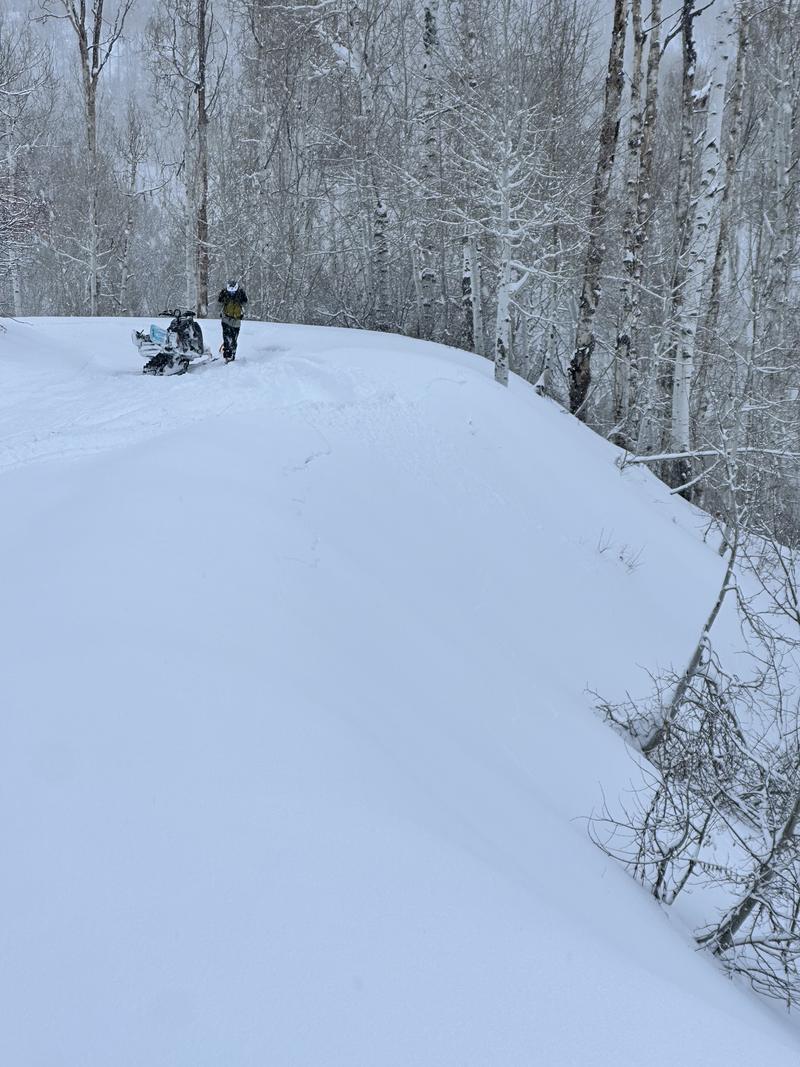
Upslope cracking caused by going slightly off the road - NE Aspect 8800'
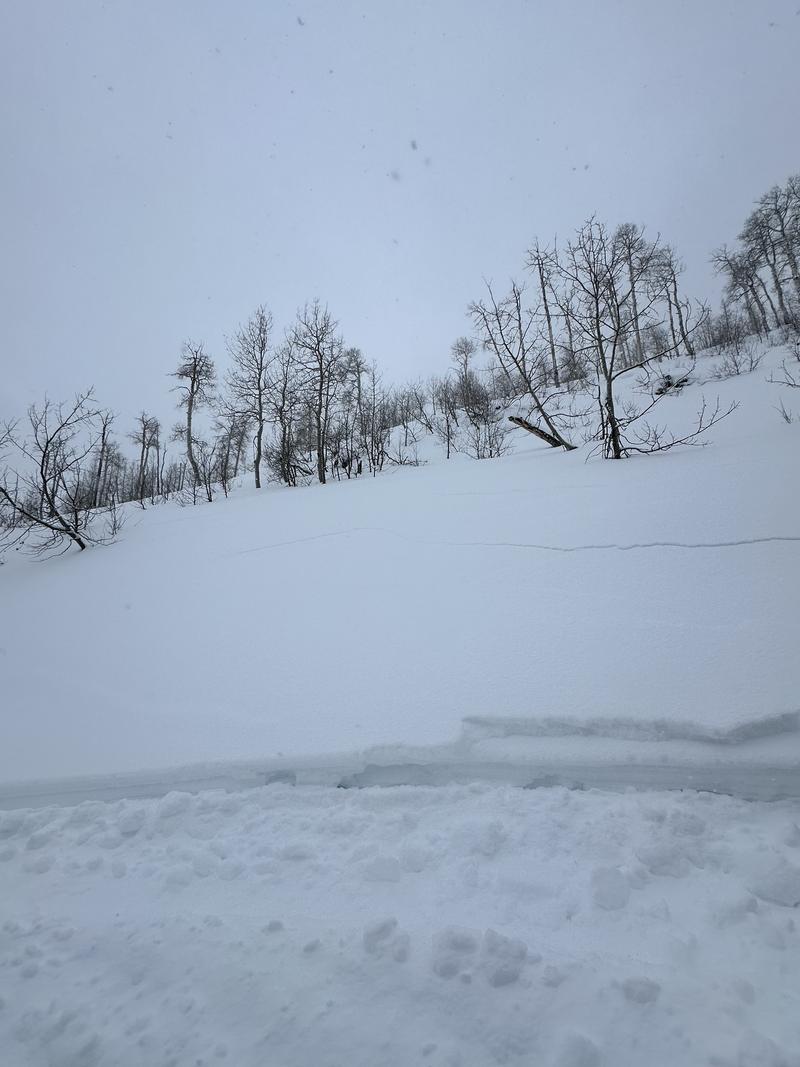
Additonal large cracking, and some new snow breaking upslope of the road - NE Aspect - 8600'
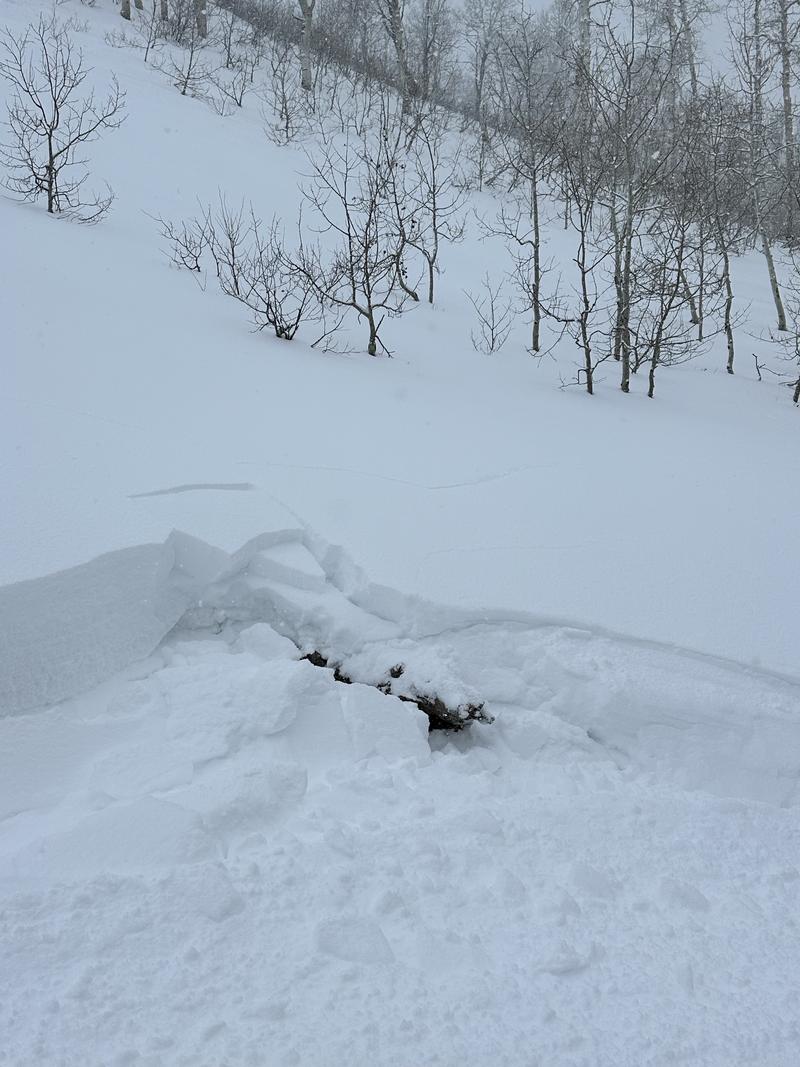
Additonal cracking from the same upslope cut as above - NE Aspect - 8600'
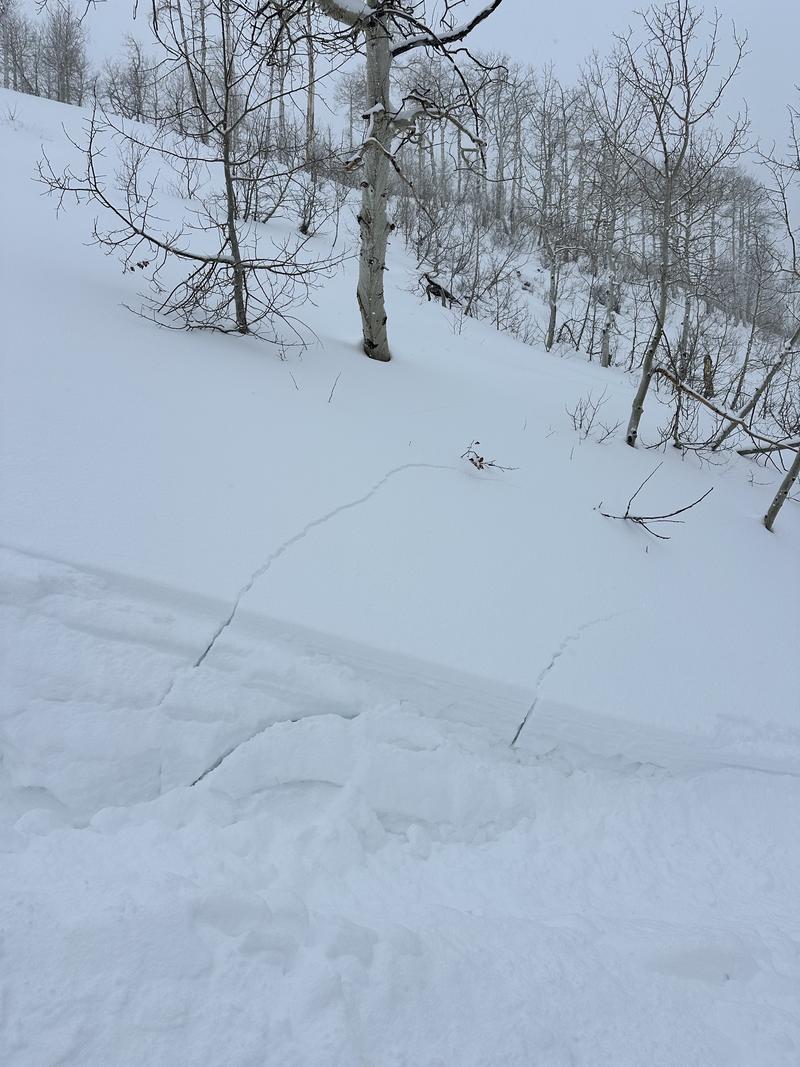
New snow depth/post-holing conditions in meadows
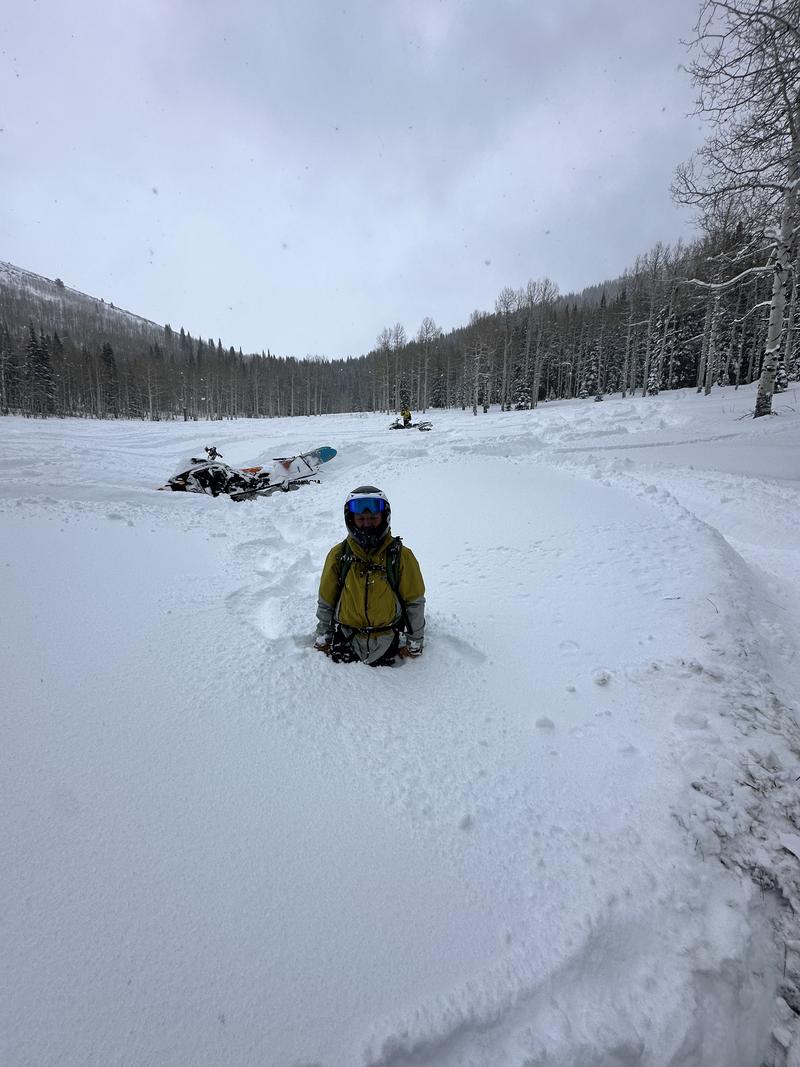
Bull Moose
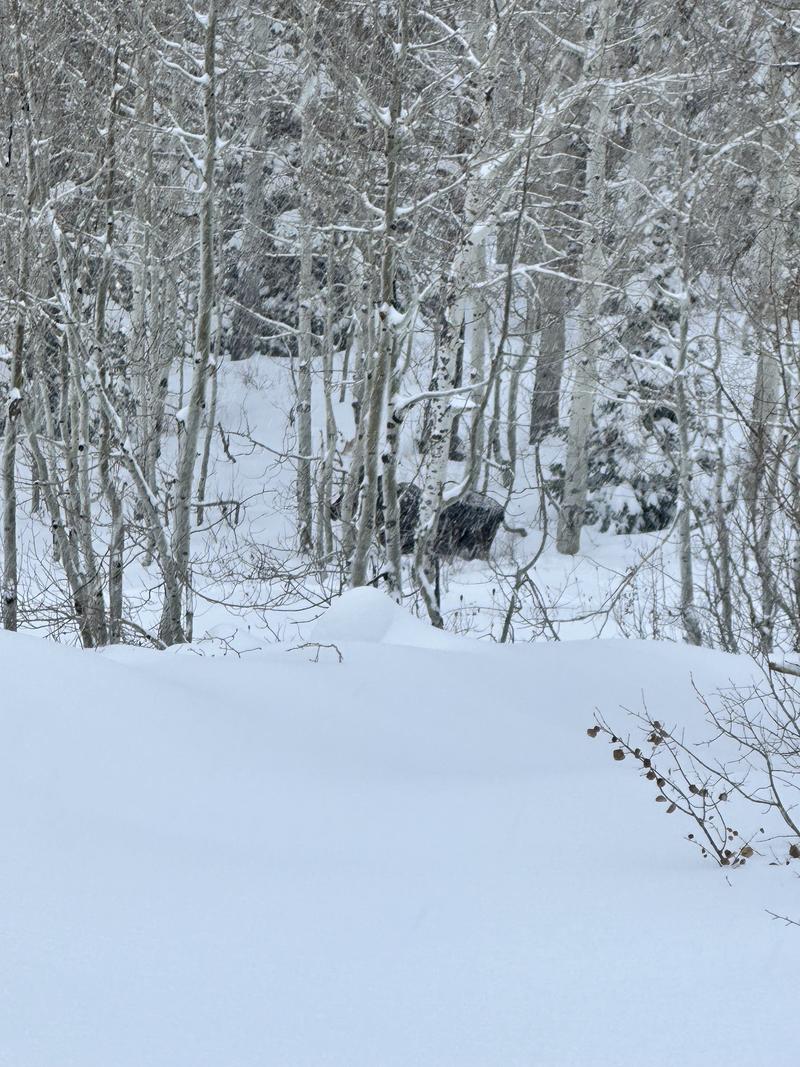
Today's Observed Danger Rating
High
Tomorrows Estimated Danger Rating
High
Coordinates



